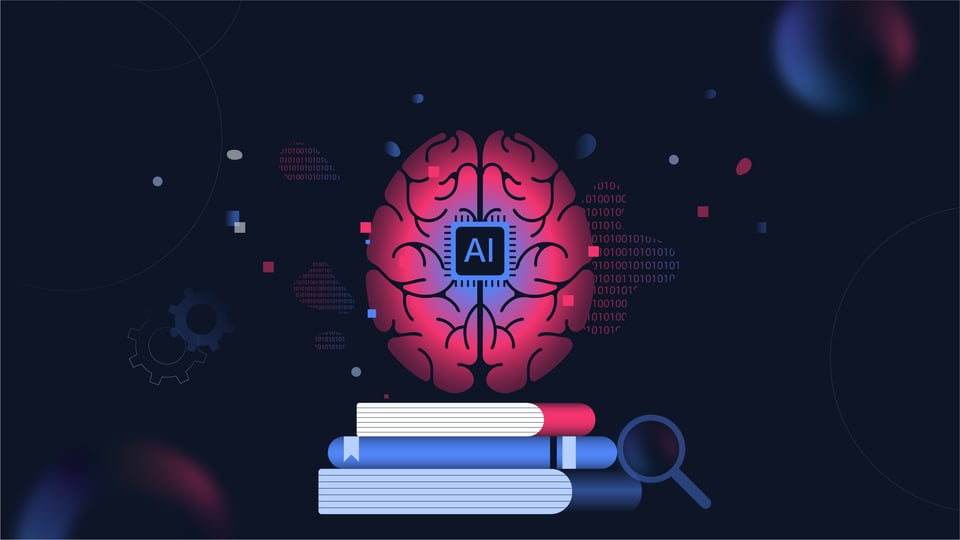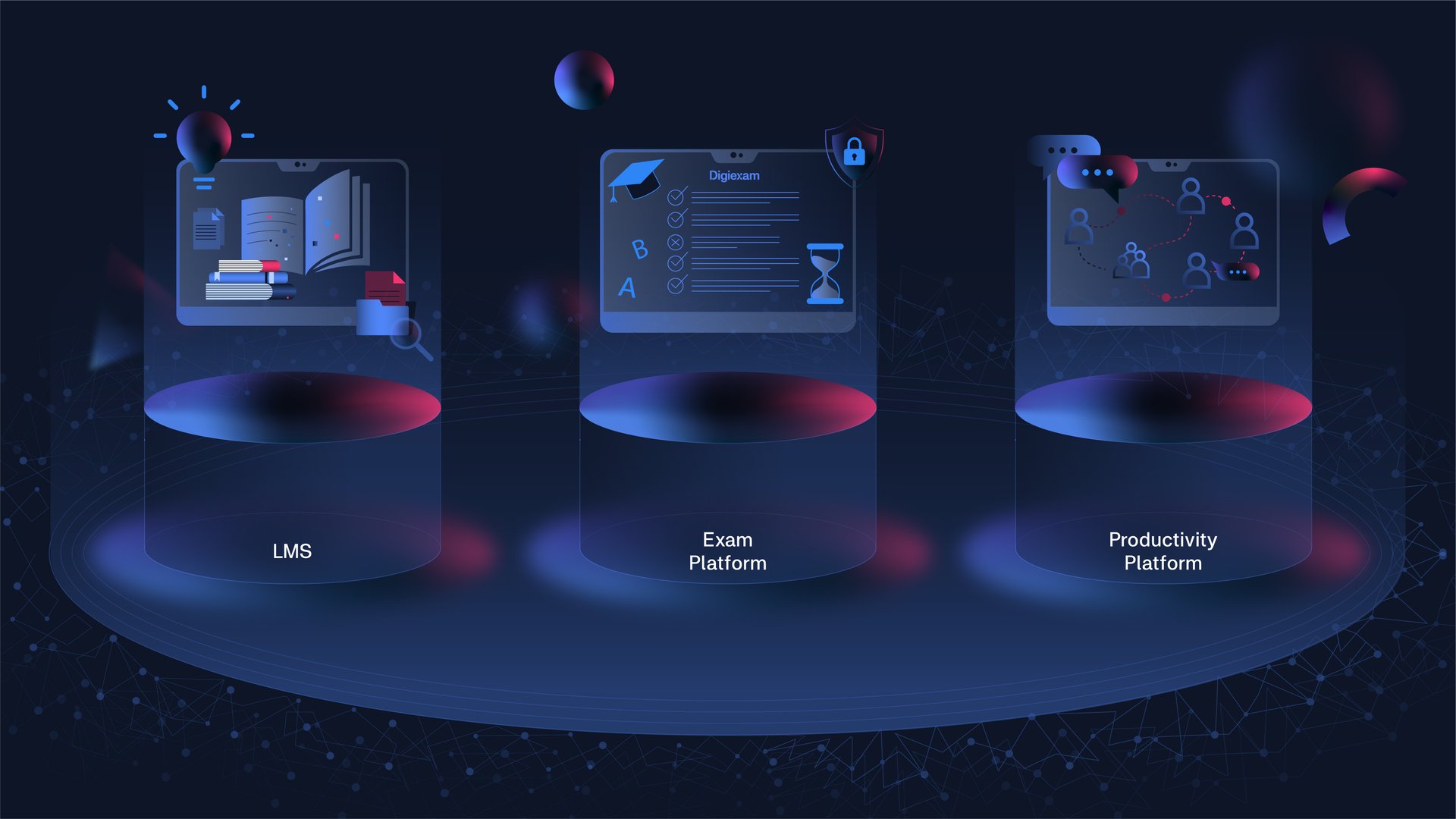The educational environment received a digital facelift after the web 2.0 revolution was embraced by the EdTech industry. EdTech developers realized a societal institution desperately in need of tools that could meet classroom environments where students were more accustomed to glowing screens versus the chalkboard’s green.
Classroom teachers can certainly attest as they rushed to modify classroom strategies and incorporate digital infrastructures swarming around them. Behind the scenes were IT-departments and ICT-educators striving to establish stable and reliable learning management systems, assessment addons and exam platforms for staff and students. The plethora of digital flora and fauna was a blessing as new tools promised less administration, easier accessibility and a chance to revolutionize the way learning could be facilitated. This lush landscape was also a curse. The path, untrodden. The shape of an educational digital ecosystem not yet well defined.
As schools blazed trails certain familiar landscapes became recognizable and established themselves amongst the ones and zeroes - a classroom learning space complete with planning, student materials and work, the exam stacks for distribution and assessment.
Jack of all trades - master of none.
Despite the concept of a learning management system (LMS) being an old hat to the educational world, it quickly became a staple of almost every educational environment within the past five to ten years. In the past decade, demand was placed upon teachers to generate, store and curate digital materials for students who were increasingly more accustomed to interactive online environments. Developers of LMSs attempted to meet these demands by building out functionality and performance. Their solution was to increasingly incorporate more aspects of the classroom. Assignment tools, quiz functions, discussion boards and media creation options became standard features in addition to the design and publication of the standard subject content. It has been an amoebic-like evolution where systems of today scarcely resemble those of even a few years prior, and whilst this growth has allowed for a “one-stop-shop” type of environment it does not come without a price.
This growth poses its own challenges. Systems that tout a multitude of features can become overwhelming for students and teachers alike.
Similar functionalities such as assignments and quizzes in a single platform can be perceived as redundant. Other challenges arise as students and teachers must keep themselves updated with the latest updates to the system.
Buttons relocate themselves.
New functions are added.
Old functions are removed.
Learned methods in the system must be unlearned risking that users find themselves off the beaten path and unable to utilize the system as they once could. These situations can often result in the perception that the learning management system can do many things, but may not do them well enough - the jack of all trades, but master of none.

Educators of tomorrow from the Technologies of today
The swing of the pendulum The recent pandemic rapidly pushed teaching and classrooms into the digital and filled it with online hand-ins, digital presentations, and online assessments in a way that...
Read moreEver increasing diversity
Alongside the evolution of the LMS came the development of more specialized educational technologies. Exam platforms, learning applications and productivity suites grew and developed alongside and attempted to interweave themselves into the larger giants of the ecosystem. The LMS became a host while specialized platforms and tools empowered and refined the LMS’s standard functionalities.
A symbiotic relationship had been established, but similar challenges associated with variety and redundancy remained. This was expected. What was unexpected was the extent to which educational tools would attempt to niche themselves. The teaching profession is complex. Thousands of judgments occur in a single day regarding the best pedagogical practices to pursue - what materials to use, what questions are suited to the learning outcomes of the moment, how to plan for tomorrow’s challenges. Many educational technologies had focused upon mirroring the nuances of the teaching profession; their hope to relieve technological burdens of a digital age. The new diversity brought a sense of security - “there’s an app for that,” but it simultaneously muddied the waters. Teachers and leaders now needed to also determine what tools should be implemented and how the strategies through which implementation would occur.
Pillars of stability
Despite it being over 20 years after web 2.0 and the first web-based learning management systems many educational institutions still wrestle with these challenges. They do so for good reason. To define what pillars should form a digital ecosystem is a difficult process that requires both technical and pedagogical understanding and insight.
To create digital stability for teachers, administrators and students is a joint effort from key stakeholders within an organization that understand how systems interplay with one another both now and in the future.
What constitutes a pillar of stability?
It is certainly the case that more resources (often human resources) at hand allows a wider and deeper use of digital tools, but this does not guarantee the systematization required to ensure a stable digital ecosystem. This question really deals with how the digital mirrors the physical for an institution. It is to meet the essential needs without being overwhelming or redundant.
The first pillar, the LMS, was previously discussed as a way to both produce and publish learning materials in an interactive way. This pillar cannot, and should not, stand alone when other tools provide more robust functionality to large aspects of an institution’s digital ecosystem.
One such robust tool, the second pillar, is the digital exam platform. The ability to effectively and reliably assess students in a digital environment has become more pressing in the wake of ChatGPT. The secure environment of an exam platform like Digiexam provides a closed system that removes chances of plagiarism or cheating - something that an LMS has yet to accomplish without technically complicated solutions. The exam platform preserves the academic integrity required of schools and institutions whilst unifying the medium through which testing occurs.
A third pillar of stability within the digital ecosystem of education is a productivity platform. Productivity platforms allow the simplified creation of content without being tied to a specific tool or device. This has become a staple for many organizations in that it allows flexibility and scalability for all types of device environments that an organization may encounter. As a result, students and teachers find themselves in a common medium for creation and sharing of material during the learning process.
A Foundation to Grow From
It could be argued that there exists a fourth pillar within educational ecosystems, and that is the student information system or SIS. A student information system, although essential, is perhaps better understood as the bedrock and raw material from which the aforementioned pillars grow. Its registry and database are important ingredients, but rarely do they form the pedagogical instruments demanded by digital ecosystems. It is from there that exam platforms ensure secure testing environments. It is from there materials and strategies are laid out in an LMS. It is from there that student work will be interwoven with productivity suites.
The digital ecosystem of schools and institutions can feel like a jungle, and therefore it becomes vital to identify and strengthen these pillars for staff and students so as to maintain preparedness as education, as a whole, expands further into the digital.

